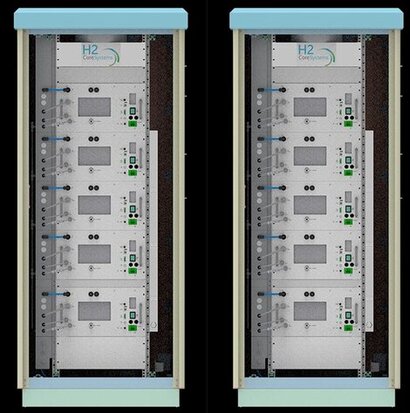
By investing in their own local hydrogen production, universities strengthen their relevance, attract future researchers and contribute to a greener future.
The need and demand to use green hydrogen as fuel or to store renewable energy until it is needed is increasing. Areas of use are many when businesses replace fossil fuels in industrial processes, build drive lines for fuel cell-powered electric vehicles or for use as electricity and heat in buildings' energy systems. By using green hydrogen generated with renewable energy, greenhouse gas emissions are reduced and contribute to the green energy transition.
As a leading system integrator within hydrogen-based local energy systems, Nilsson Energy specialises in designing and implementing complex solutions to meet customer needs. The company acts as a link between different components, software and technologies for safe, efficient and robust hydrogen-based systems. Recently, the company has seen an increased interest from universities and researchers in the systems that it develops and delivers.
“Universities and researchers play a decisive role in developing new technology and improving existing ones” said Abdallah Abou-Taouk, senior quotation engineer at Nilsson Energy. “Research into hydrogen in production, storage, fuels and transport as well as the development of new materials and technologies, which can make hydrogen production more efficient and cost-effective, are important pieces of the puzzle for the green energy transition to be successful. Spreading knowledge is another important factor and at Nilsson Energy we have a great opportunity to deliver relevant knowledge, practical experience and technology for real green hydrogen.”
Nilsson’s customised modular systems use Enapter's AEM technology and an environmentally friendly electrolyte to produce green hydrogen. The systems are efficient and scalable, which fits perfectly in various research projects where the goal is to produce hydrogen for research and development within, among other things, the transport industry.
“Synthetic fuels have the potential to make a significant contribution to the development of sustainable mobility, which also provides the opportunity to store excess electrical energy” added Hao Chen, researcher at Mälardalen University (MDU). “With the IFAISTOS project (Intelligent electrofuel production for integrated energy storage system), the AEM electrolysis system will be tested at MDU for the production of green hydrogen. We will also explore the potential opportunities to develop a long-term energy storage solution based on electrofuels that can integrate the electricity from renewable energy sources into the entire energy system, from gas to heating, transport and chemicals, promoting the clean energy transition in Europe.”
The Technical University of Denmark (DTU) is focusing on the integration of the AEM electrolysis system into teaching and research activities, according to Shi You, senior researcher at DTU, so that students and researchers will have the opportunity to understand the principles and practical experience of modern electrolyser technology.
“Furthermore, researchers will use this system to develop multiphysics process models and control of electrolysers” said Mr You. “We will have the opportunity to understand how the electrolysers' by-products can be optimally used, for example in waste heat and grid balancing services.”
The University of Åland also intends to integrate the AEM electrolysis system - into a chain, from solar energy to hydrogen, to be used in teaching to give its students an opportunity to immerse themselves in the production of green hydrogen from the excess energy produced on favourable days with low energy consumption. The equipment will be used by students and staff both in education and research.
For additional information:

